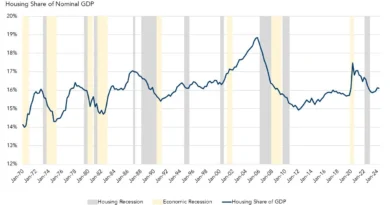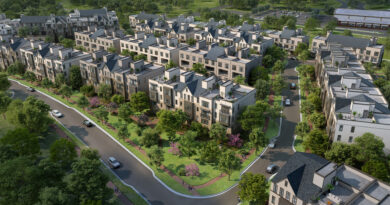The 2025 Outlook for Homebuilding
The actions of lawmakers and the incoming administration play a pivotal role in regards to the economic future
By Robert Dietz
Economic growth and labor market activity has slowed due to elevated interest rates connected to tight monetary policy intended to slow inflation. After peaking at a 9.1% growth rate in June 2022, the pace of inflation has slowed to a 2.4% annual growth rate in September. However, shelter inflation remains above trend. The housing deficit, and its impacts on housing affordability, represents the last leg of the Fed’s fight against inflation. Shelter inflation is running at a 4.9% growth rate. The only way to tame shelter inflation and the overall growth of prices for the U.S. economy is to build more attainable and affordable, for-sale and for-rent, single-family and multifamily housing. Policy improvements, particularly at the state and local level, is key to this challenge.
Policy itself is the wild card for the outlook. With respect to monetary policy, the Federal Reserve is on a path for further cuts to the short-term federal funds rate. The Fed has already reduced this rate 75 basis points since September. The National Association of Home Builders is forecasting an additional 25 basis point reduction before the end of 2024, and the rate of easing will slow to just one rate reduction per quarter through the end of 2025. After peaking at 5.5% in 2023, we see this rate being reduced to a new terminal rate of 3.5% in late 2025.
With respect to mortgage rates, keep in mind that Fed rate cuts only indirectly affect long-term interest rates, like mortgage rates and the 10-year Treasury rate. In contrast, Fed rate reductions directly affect interest rates on build and developer Acquisition, Development and Construction (ADC) loan rates, so we are forecasting gradually improving lending conditions for builders and land developers.
Policy itself is the wild card for the outlook.”
Long-term rates are correlated through a complicated mix of economic growth conditions, market expectations for inflation, and short-term monetary policy conditions. This is where the 2024 election results, with a dramatic Republican sweep and a second Trump administration, will have an impact on the outlook. The return of Trump means lower taxes, improved regulatory policies, increased growth expectations but also increased inflation concerns. A number of high-profile campaign promises associated with the incoming administration will, if fully implemented, place upward pressure on inflation.
For example, deportations of illegal immigrants will tighten labor markets, particularly in border states, increasing the cost of business operations. Increases of tariffs act as a tax on imported materials. For homebuilding, nearly 10% of residential construction materials are imported. Higher costs for such imports will also add inflationary pressure.
As such, while the stock market loved the results of the 2024 election, the bond market is concerned. Bonds sold off and the 10-year Treasury rate increased from 3.6% to 4.3%, with an increase for mortgage rates back to 6.8%. NAHB is forecasting gradual, but uneven, declines for mortgage rates in 2025, with rates approaching 6% by the end of the year.
Mindful of these upside and downside economic and policy risks, we are forecasting a modest gain for single-family homebuilding, with starts totaling just above 1 million for 2025. Homebuilders will face rising competition in 2025 and 2026 from rising levels of resale inventory, although the current, combined months’ supply measure for new and existing single-family homes available for sale remains low, below a five-months’ supply. As this number rises to six, competitive headwinds for builders will rise.
We expect the large declines for multifamily construction in 2024 to moderate and level off, with apartment starts in 2025 to stabilize at an annual total of approximately 330,000. Finally, we expect ongoing gains for remodeling growth, given $30-plus trillion in homeowner equity, an aging housing stock and a need for improvement spending to increase the existing housing stock’s resiliency and energy-efficiency.
There is significant upside and downside risks from factors such as immigration/worker status, the government deficit, and improvements for state/local policy. NAHB estimates that for the typical single-family home, approximately one-quarter of the final sales price is due to regulatory costs and burdens. Reducing these factors is important for the health of the home building industry and improving housing affordability. That’s why learning about and helping to improve the outlook for residential construction—joining your local home building or building industry association is so important. It is through such organizations that we can improve the outlook for housing in 2025.
Robert Dietz is the chief economist for the National Association of Home Builders.



